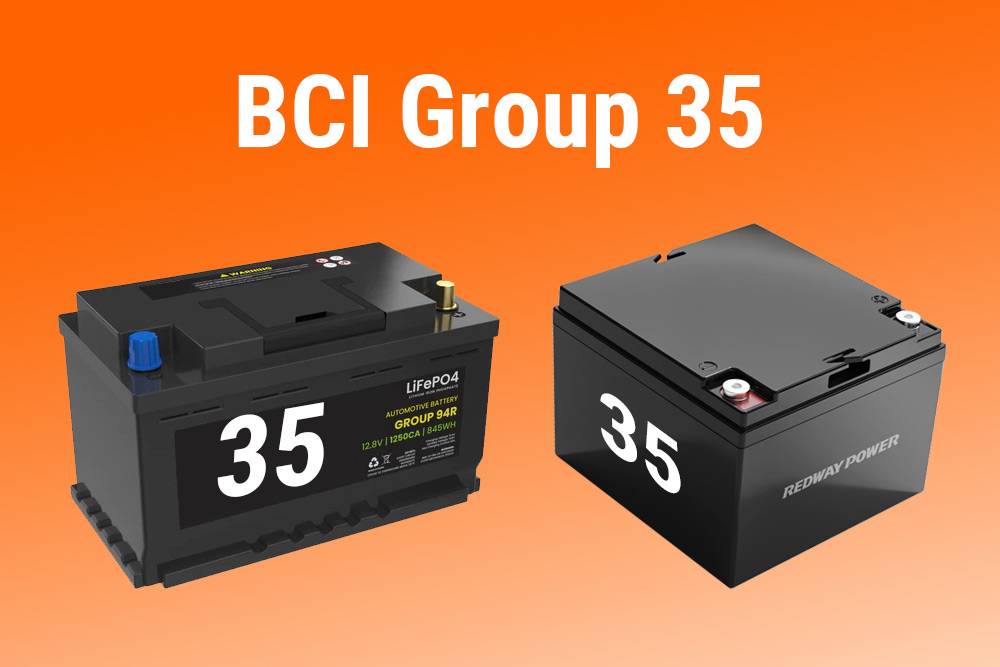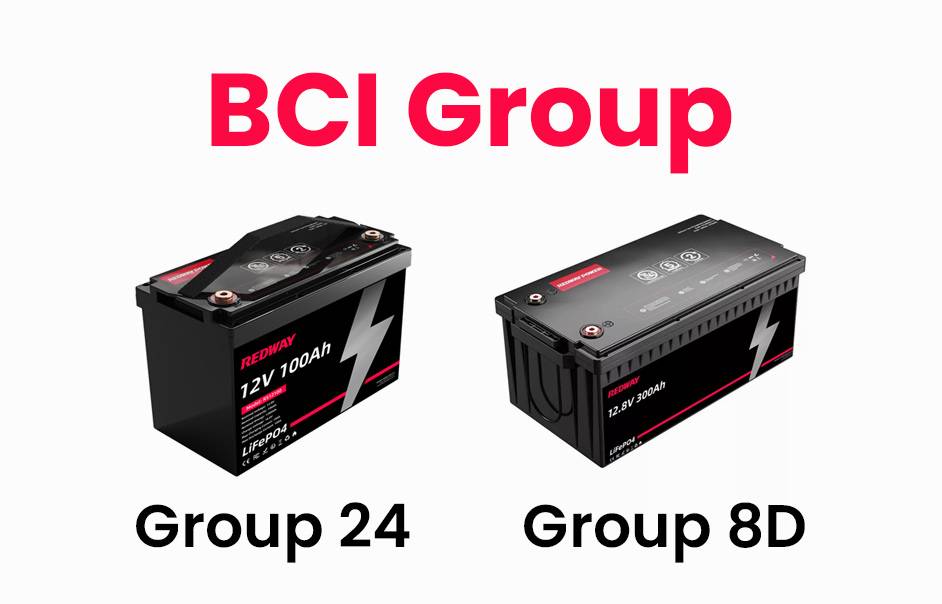
Blog
BCI Group 35 Batteries, Comprehensive Guide

BCI Group 35 batteries are a standardized mid-size battery type widely used in cars, trucks, RVs, and marine applications. They typically deliver 12 volts with capacities ranging between 44 to 65 ampere-hours (Ah) and cold cranking amps (CCA) suited for reliable starting power. Available in various chemistries including lead-acid and lithium, Group 35 batteries combine optimal size and performance to enhance vehicle and equipment reliability.
What does BCI Group 35 signify for batteries?
BCI stands for Battery Council International, which standardizes battery sizes for compatibility across applications. Group 35 defines a battery’s physical size, terminal placement, and essential attributes to fit specific engine compartments or equipment bays without modification. This ensures easy replacement and consistent performance among manufacturers.
What are the physical dimensions and specifications of Group 35 batteries?
Group 35 batteries typically measure approximately 9.06 inches in length, 6.88 inches in width, and 8.88 inches in height. Terminal layouts are standardized for compatibility. Weight varies by chemistry but generally ranges from 40 to 50 pounds for traditional lead-acid batteries, with lighter weights for lithium versions.
Chart: Group 35 Battery Dimension Overview
| Dimension | Measurement (inches) | Measurement (mm) |
|---|---|---|
| Length | 9.06 | 230 |
| Width | 6.88 | 175 |
| Height | 8.88 | 225 |
What voltages, capacities, and CCA ratings do Group 35 batteries offer?
Group 35 batteries deliver the standard automotive voltage of 12 volts. Their capacity typically ranges between 44 Ah and 65 Ah, with Cold Cranking Amps (CCA) ratings from about 430 to 850 CCA depending on design. Higher CCA is vital for cold weather starting performance.
What are the different types and chemistries available in Group 35 batteries?
Common chemistries include:
- Flooded Lead-Acid: Traditional, cost-effective but requires periodic maintenance.
- Absorbent Glass Mat (AGM): Sealed, maintenance-free, better performance and longevity.
- Gel Cell: Maintenance-free, deep cycle capable for frequent discharging.
- Lithium-Ion (LiFePO4): Lightweight, long lifespan, high discharge rates, growing in popularity due to advanced features and maintenance-free nature.
How are Group 35 batteries commonly used in vehicles and other equipment?
Group 35 batteries are frequently installed in mid-sized vehicles, trucks, marine boats, RVs, and certain industrial machines. They are suitable for starting, deep cycle, or dual-purpose applications, offering versatility across many sectors.
How do lithium-based Group 35 batteries compare to lead-acid alternatives?
Lithium Group 35 batteries are significantly lighter—often half the weight—and provide longer cycle life, faster charging, and higher efficiency compared to lead-acid. They eliminate maintenance hassles like watering and sulfation risks, though with higher upfront costs. Lithium versions from manufacturers like Redway Power offer superior performance and durability.
What factors should you consider when choosing a Group 35 battery?
Key considerations include battery chemistry, required capacity and CCA, application type (starting vs. deep cycle), physical fit, weight limitations, maintenance preferences, and budget. For demanding applications, lithium options may offer better total cost of ownership despite premium price.
How should Group 35 batteries be maintained for optimal performance?
Maintenance depends on chemistry:
- Flooded batteries need electrolyte level checks, terminal cleaning, and periodic equalization charges.
- AGM and Gel batteries require minimal maintenance but should be kept clean and properly charged.
- Lithium batteries are virtually maintenance-free but benefit from proper charging practices with compatible chargers to maximize lifespan.
How do Group 35 batteries perform in extreme temperatures?
Performance can degrade at very low temperatures; however, high-quality AGM and lithium variants maintain better cold temperature efficacy than flooded types. Lithium chemistry particularly excels in extreme conditions, making these batteries ideal for variable climates.
How does Redway Power contribute to manufacturing and supplying Group 35 batteries?
Redway Power leverages over 13 years of expertise and MES-enabled manufacturing to produce advanced lithium Group 35 battery packs optimized for automotive and industrial applications. Their batteries feature precise voltage control, battery management systems ensuring safety and balance, and are engineered for maximum reliability and lifecycle, boosting overall equipment performance.
Redway Power Expert Views
“At Redway Power, our commitment to battery innovation drives the development of high-performance Group 35 lithium packs that redefine reliability and efficiency. By integrating state-of-the-art management systems and stringent quality controls, we empower vehicles and machines with dependable power that endures rigorous demands. Our MES-based manufacturing assures customers of consistent excellence in every battery.” — Redway Power Expert
Conclusion
BCI Group 35 batteries offer the perfect balance of size, capacity, and performance for a wide array of automotive and industrial applications. Understanding battery chemistry options, technical specifications, and maintenance needs is essential to selecting the optimal battery. With cutting-edge lithium alternatives from companies like Redway Power, users can enjoy enhanced performance, lighter weight, and longer battery life, making Group 35 batteries a smart choice for modern power needs.
FAQs
Q: What is the standard size of a BCI Group 35 battery?
A: Approximately 9.06 x 6.88 x 8.88 inches (230 x 175 x 225 mm).
Q: Can I use lithium Group 35 batteries as direct replacements for lead-acid?
A: Yes, many lithium Group 35 batteries are designed as drop-in replacements but require compatible charging systems.
Q: What applications commonly use Group 35 batteries?
A: Mid-sized vehicles, trucks, marine boats, RVs, and some industrial equipment.
Q: How does Redway Power ensure quality in their Group 35 batteries?
A: Redway Power uses MES-enabled processes and advanced battery management systems to guarantee safe, balanced, and durable lithium battery packs.
Q: Are AGM Group 35 batteries maintenance-free?
A: Yes, AGMs are sealed and require virtually no maintenance compared to flooded types.




